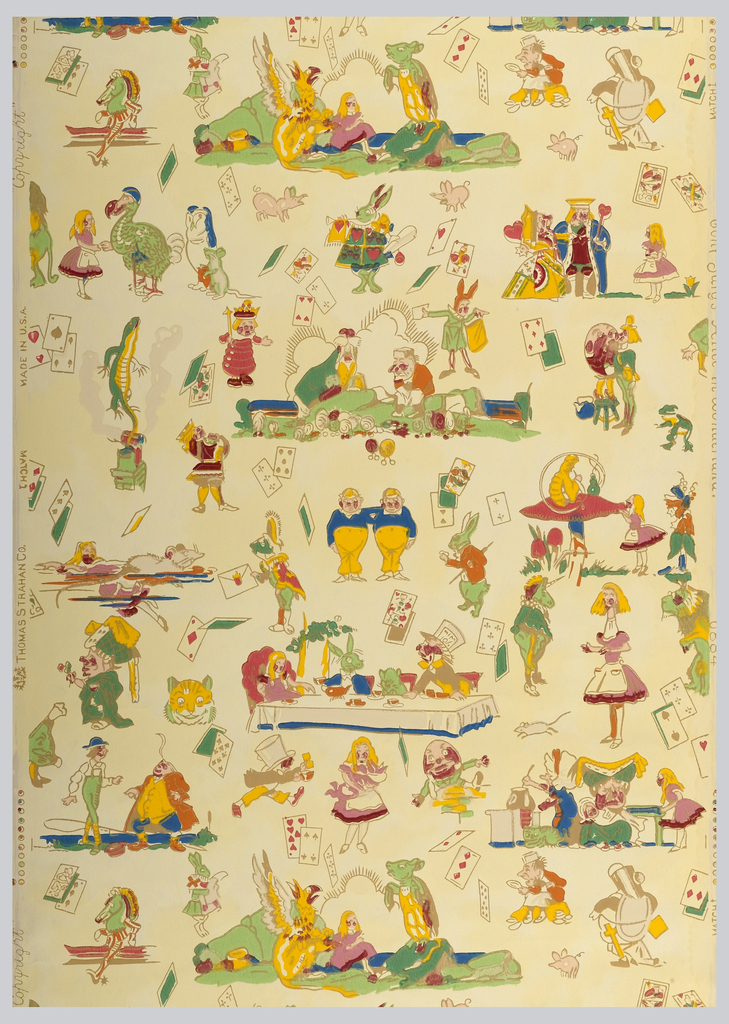During the 1920s and 30s, child-rearing experts pointed out the negative effects of mass recreation, especially movies, to the growth of American children. They argued that as passive spectators, children would likely bring home images of glamour and a sense of the social power of consumer goods after attending movies since what they saw in films were “good clothes make the man,” and “smartly dressed girls are popular.”1 This could result in children becoming envious of the possessions of others, and envy might lead to character flaws which would later appear in adulthood. Therefore, in opposition to the passive spectatorship which aroused the issue of envy, the virtues of active adventures and play were extolled and emphasized by child experts.
This vibrant Alice in Wonderland wallpaper for children’s rooms is evidence of designer Tony Sarg’s support for children taking active adventures and play. Sarg arranged patterns of the wallpaper in a relaxed and dispersed way: small patterns such as Dodo greeting Alice, Alice and the Caterpillar, the twin boys Tweedledee and Tweedledum, and playing cards are scattered freely to fill in the additional blank space around the three large main patterns in the center. What Sarg advocated through the composition is the free, rather than constrained, domestic space which could provide condition for children to take active adventures and attempts.
As children’s wallpapers were not deemed a necessity during the depression years, these papers were run through the presses at exceedingly fast speeds to make them more economical. This allowed less drying time and resulted in more color bleed, which turns the supposed blush on Alice’s cheeks into nosebleed and tears of blood.
Although Alice in Wonderland is the only wallpaper in the museum collection that resulted from Sarg’s collaboration with the Strahan company, it demonstrates that as a puppeteer, illustrator, and cartoonist, Sarg not only provided works for children across different media but was also concerned about their welfare.
Binglei Yan is a graduate student in the History of Design and Curatorial Studies at the Cooper Hewitt, Smithsonian Design Museum/Parsons The New School for Design. She holds a bachelor’s degree in East Asian Languages and Cultures and thus is interested in the cultural exchanges between the east and the west that shape decorative arts.
1. Susan J. Matt, “Children’s Envy and the Emergence of the Modern Consumer Ethic, 1890-1930,” Journal of Social History 36, no. 2 (2002): 285, accessed October 15, 2016, http:// www.jstor.org/stable/3790111.
